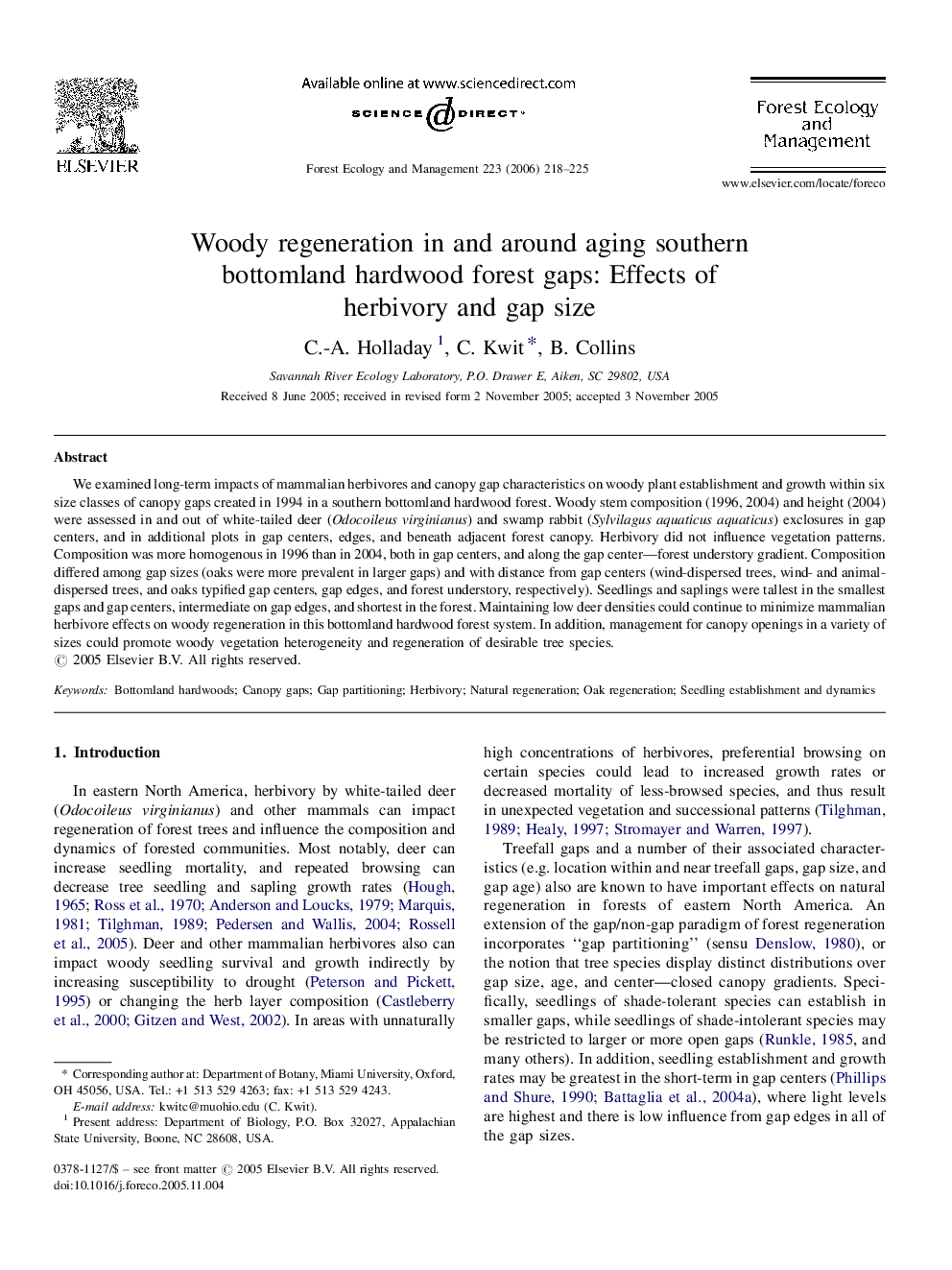| کد مقاله | کد نشریه | سال انتشار | مقاله انگلیسی | نسخه تمام متن |
|---|---|---|---|---|
| 90590 | 159389 | 2006 | 8 صفحه PDF | دانلود رایگان |

We examined long-term impacts of mammalian herbivores and canopy gap characteristics on woody plant establishment and growth within six size classes of canopy gaps created in 1994 in a southern bottomland hardwood forest. Woody stem composition (1996, 2004) and height (2004) were assessed in and out of white-tailed deer (Odocoileus virginianus) and swamp rabbit (Sylvilagus aquaticus aquaticus) exclosures in gap centers, and in additional plots in gap centers, edges, and beneath adjacent forest canopy. Herbivory did not influence vegetation patterns. Composition was more homogenous in 1996 than in 2004, both in gap centers, and along the gap center—forest understory gradient. Composition differed among gap sizes (oaks were more prevalent in larger gaps) and with distance from gap centers (wind-dispersed trees, wind- and animal-dispersed trees, and oaks typified gap centers, gap edges, and forest understory, respectively). Seedlings and saplings were tallest in the smallest gaps and gap centers, intermediate on gap edges, and shortest in the forest. Maintaining low deer densities could continue to minimize mammalian herbivore effects on woody regeneration in this bottomland hardwood forest system. In addition, management for canopy openings in a variety of sizes could promote woody vegetation heterogeneity and regeneration of desirable tree species.
Journal: Forest Ecology and Management - Volume 223, Issues 1–3, 1 March 2006, Pages 218–225